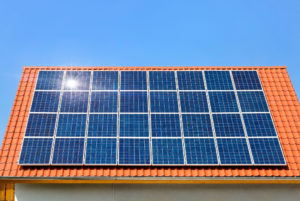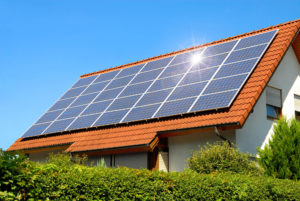The story of solar panels is a journey through time, bridging ancient wisdom with modern innovation. It’s a tale that starts in the distant past, where the first glimmers of understanding about solar energy emerged, leading us to the pivotal moments of scientific discovery that shaped our present. This article delves into the rich history of solar panels, from their earliest conceptualizations to the groundbreaking inventions that have revolutionized our approach to energy.
We’ll explore how ancient civilizations harnessed the sun’s power, setting the stage for centuries of curiosity and exploration. Fast forward through history, and we meet the visionaries whose experiments and discoveries in electricity and photovoltaics paved the way for the solar panels we know today. Their persistence in the face of challenges and inefficiencies led to breakthroughs that transformed solar energy from a curious phenomenon into a practical, powerful source of renewable energy. This narrative isn’t just about technology; it’s a celebration of human ingenuity and the relentless pursuit of sustainable solutions for our planet. Join us as we uncover the intriguing evolution of solar panels and their significant impact on our world.
Contents
- 1 Key Takeaways
- 2 Effectiveness in the Ancient World
- 3 The Invention of Solar Panels
- 4 The True Invention of Solar Panels – A Giant Leap for Mankind
- 5 The After Effect of the Solar Panel Invention
- 6 Expert Insights From Our Solar Panel Installers About When Solar Panels Were Invented
- 7 Experience Solar Excellence with Us!
- 8 Summing Up
Key Takeaways
- Solar panels were invented in 1954, marking a significant milestone in the use of solar energy to generate electricity.
- The concept of harnessing solar energy dates back to ancient civilizations, with historical records showing the use of sunlight to initiate fires and power mirrors for various purposes.
- The development of solar panels involved contributions from several inventors and scientists, culminating in the creation of more efficient solar cells and panels over the years, leading to the modern advancements in solar technology.
Effectiveness in the Ancient World
Based on ancient scriptures, the first mention of solar energy usage was in the 7th century B.C. According to history, civilizations used to initiate fires by using sunlight on materials like a magnifying glass. Therefore, the essence of solar power is not a new-age solution.
Due to these initiatives, people could start cooking easily and keep themselves warm.
 Fast-forwarding to the 3rd century B.C, history records the use of solar energy in religious ceremonies. It was prevalent among the Roman and Greek empire, where solar energy was used to power mirrors for lighting torches. Moreover, these “burning mirrors” became a standard tool for civilization and got documented worldwide.
Fast-forwarding to the 3rd century B.C, history records the use of solar energy in religious ceremonies. It was prevalent among the Roman and Greek empire, where solar energy was used to power mirrors for lighting torches. Moreover, these “burning mirrors” became a standard tool for civilization and got documented worldwide.
At the height of harnessing solar power, the invention of sunrooms became famous. These south-facing rooms were naturally warm as they captured the concentrated sunlight.
This idea was infamous in Roman houses to Native American homes.
Primitive humans knew the importance of this energy. Since then, it has passed down to generations and made its way into the most advanced time for humanity. Therefore, the same idea is now being used to power the estimated 97.2 million solar panels globally.
The Invention of Solar Panels
Numerous physicists, mathematicians, and inventors played a part in building a conventional and innovative solar panel. Hence, attributing them and praising them will be ideal.
Here is a timeline in steps that led to the invention of solar panels we know today:
The Discovery
Taking inspiration from history, a French physicist, Edmond Becquerel, discovered the photovoltaic effect in 1839. He experimented on this discovery and observed fascinating results. However, initially, he did not plan on discovering this energy.
Instead, he was experimenting on metal electrodes shaped in cells for an electricity conduction solution.
During this process, he stumbled upon the reaction this cell had when exposed to light. It proved that the voltage produced generated an enhanced electric current when exposed to radiant energy.
Becquerel’s experiments had the potential to change the world!
The Breakthrough
After almost two decades, there was a breakthrough in this department. A French mathematician got inspiration from his work and started registering patents for a solar-powered engine.
His name was Augustin Mouchot, and history remembers him as the pioneer of a solar-powered engine. His initiatives in the 1860s inspired many inventors to start developing such devices.
The Advent of Selenium
In 1873, Willoughby Smith, an English electrical engineer, discovered something groundbreaking. He found out that selenium had the functionality of a photoconductor. Therefore, his discovery was the driving force required to invent photoelectric cells.
Then, in 1876, Richard Evans Day and his colleague William Grylls Adams started to link Smith’s studies with Becquerel’s.
They applied the principles of photovoltaic energy to selenium. Therefore, they proved the existence of energy generation when exposed to light.
The Efficiency Dilemma
Charles Fritts, an American inventor, made the first solar cell based on the same principle of selenium. However, his solar cell did not have 1% efficiency in converting sunlight, rendering it useless.
For the next several decades the selenium photovoltaics underwent considerable research and development. Yet, the applications did not seem viable or effective.
Due to the hindrance, this innovative idea became lost in the cracks of history.
The Final Discovery
 For many years, the technology of solar cells remained dormant in terms of breakthroughs.
For many years, the technology of solar cells remained dormant in terms of breakthroughs.
In 1940, a semiconductor researcher working for Bell Labs, Russel Ohl, discovered the importance of negative and positive charges. However, his discovery was also accidental as he was examining a cracked silicon sample.
Upon examination, he found that this sample had current flow when exposed to light due to the positive and negative charges doped in it.
Inadvertently, he made a p-n junction, which is the basic requirement for any solar cell to work. Furthermore, he patented his invention. Based on this, an effective solar cell made from the same silicon was created.
Nearly 13 years later, in the same labs under competent scientists’ supervision, the first solar panel got invented.
The True Invention of Solar Panels – A Giant Leap for Mankind
Daryl Chapin engineered the final innovation. He worked with magnetism at Bell Labs and knew p-n junctions. Later, he started developing telephone systems in humid and remote locations.
In these locations, the cell batteries would die out quicker and make it difficult for the people. Therefore, he used his knowledge to try and find alternative power sources and stopped when finding solar power.
This energy seemed promising; however, it was inefficient.
At the same time, Gerald Pearson and Calvin Fuller used their physicist and chemist brains to work on semiconductors. Furthermore, they introduced impurities to generate the properties and to control them.
Fuller introduced a silicon conductor covered with gallium impurities to Pearson. Consequently, they used lithium on this element to create a p-n junction. Then, they hooked an ammeter onto it and shone a light.
And this was the breakthrough the world needed!
To their surprise, the ammeter jumped after getting introduced to the light. After this, they went to Chapin and started working together on silicon as a conductor.
For months, they worked to improve the efficiency of this prototype. Indeed, they overcame numerous difficulties like developing electrical contacts and the issue with lithium at room temperature.
Finally, they settled on boron and arsenic as the impurities to create a perfect p-n junction.
Due to this, they created good electrical currents from the silicon cells. Consequently, they linked these solar cells and created a solar battery after the final touches and designs.
These cells had a 6% efficiency at converting solar power to electric energy instead of the 1% before.
In 1954 on the 25th of April, Bell Labs announced the creation of solar panels. The company demonstrated this by powering a toy Ferris wheel in New Jersey. Furthermore, they also used solar panels to power a radio transmitter.
The After Effect of the Solar Panel Invention
 Indeed, the silicon solar cells manufactured at Bell Labs were extremely expensive at that time. Therefore, after combining them into a solar panel, it would be impossible for the public to acquire due to the price.
Indeed, the silicon solar cells manufactured at Bell Labs were extremely expensive at that time. Therefore, after combining them into a solar panel, it would be impossible for the public to acquire due to the price.
In 1973, Solar One, the first solar building, was accredited to the University of Delaware.
It ran on solar photovoltaic and thermal power. It means the solar cells got integrated on the roof instead of using solar panels.
America faced an energy crisis during this time, and the Solar One initiative showcased a better energy option. Based on this, the government also passed a bill – “Solar Energy Research, Development, and Demonstration Act of 1974.”
It was a commitment to make solar energy more affordable and viable for the public market! Since then, the world of solar has grown exponentially, and the price has fallen gradually. You will find Chapin, Pearson, and Fuller in the National Inventors Hall of Fame.
You will find solar cells in most devices. Some handheld calculators use small cells to function. Moreover, rooftop solar panels have gained numerous advancements in designs and materials.
From the 6% efficiency, some modern solar cells have reached 40% efficiency. The research is continuing as the developments in solar energy seem to be endless.
Humans will soon bring down the cost of living and regulate the environment by harnessing solar power.
Expert Insights From Our Solar Panel Installers About When Solar Panels Were Invented
Understanding the historical journey of solar panels gives us great appreciation for the innovations that have led to today’s advanced solar technologies. From the early discoveries of the photovoltaic effect to the first efficient solar cells developed in the 1950s, every milestone has been crucial in making solar energy a viable alternative to fossil fuels.
Lead Solar Engineer
The evolution of solar panels is a testament to human ingenuity and the relentless pursuit of sustainable energy solutions. Each breakthrough, from the use of selenium to the invention of silicon-based cells, highlights the collaborative efforts of scientists and engineers dedicated to harnessing the sun’s power.
Solar Technology Specialist
Solar panels’ invention in 1954 marked a significant turning point in renewable energy. The advancements in efficiency and cost reduction since then have made solar power accessible to millions, paving the way for a cleaner and more sustainable future.
Renewable Energy Consultant
Experience Solar Excellence with Us!
Trust in Solar Panels Network USA, where our seasoned experts deliver top-quality solar solutions for homes and businesses nationwide. With a legacy of countless successful installations and a commitment to sustainable energy, we’re your reliable partner in the solar journey. Ready for a brighter, eco-friendly future? Call us now at (855) 427-0058 and harness the power of the sun!
Summing Up
After numerous patents, hindrances, and developmental breakthroughs, solar panels were invented in 1954. However, this innovative idea dates back to ancient civilizations. Harnessing solar energy has been embedded in our DNA ever since history’s first record.
Indeed, the world now has hope of having an alternative to conventional energy. And it was only because of numerous brilliant minds working together.
Maybe we were meant to use the sun’s power to keep ourselves alive? What if solar panels were discoveries and not an invention?
Whatever the case is, solar panels changed the world as we know it! Now, the dream of sustainable living is attainable.
About the Author
Solar Panels Network USA stands at the forefront of solar energy solutions, driven by a team of seasoned solar engineers and energy consultants. With over decades of experience in delivering high-quality solar installations and maintenance, we are committed to promoting sustainable energy through customer-centric, tailored solutions. Our articles reflect this commitment, crafted collaboratively by experts to provide accurate, up-to-date insights into solar technology, ensuring our readers are well-informed and empowered in their solar energy decisions.

